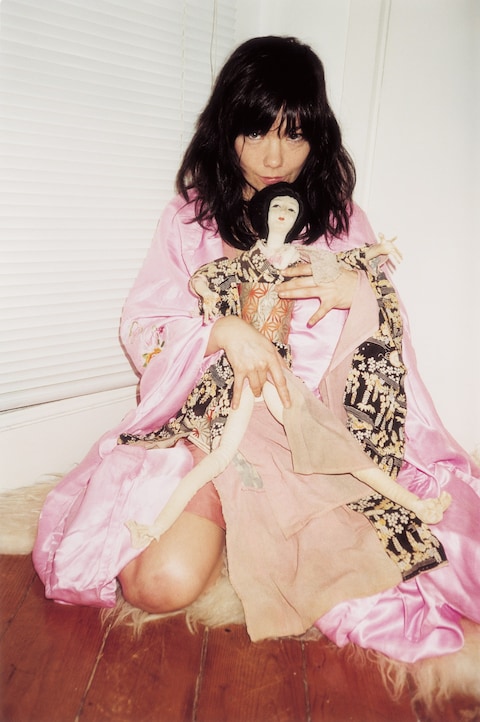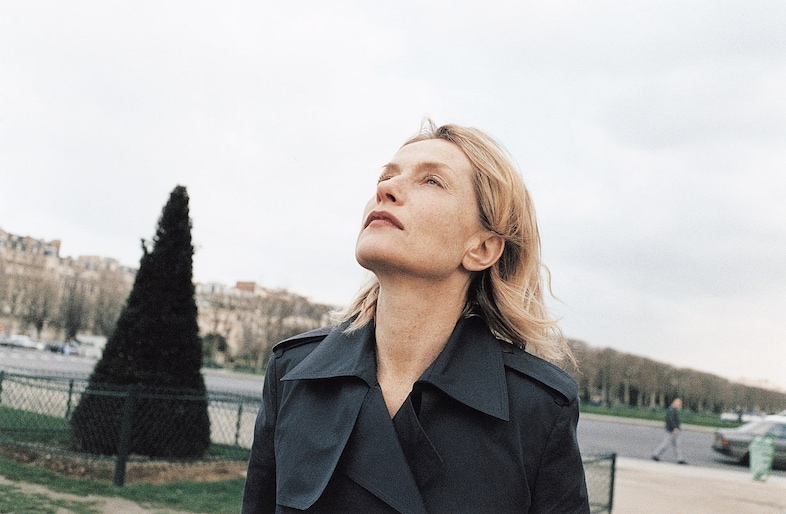A new exhibition in Paris revisits the cutting-edge 90s magazine, which featured early shoots by Wolfgang Tillmans and Juergen Teller, and paved the way for print culture today
A pivotal figure in the Neo-Conceptualist movement that had emerged a decade prior, Peter Halley was already established in the art world when the first issue of his magazine Index hit newsstands in 1996. “It was a wonderful, chaotic time in my life as an artist, but I thrived on it,” he says. A product of its New York surroundings, largely inspired by Andy Warhol’s Interview and Halley’s dissatisfaction with the art scene at the time, Index was a cultural bible anchored in 90s indie sentiment. Co-founded with curator Bob Nickas, the operation was based out of Halley’s Chelsea studio. “I would be working on my paintings and people would come in and out to talk to our editorial staff. Sometimes I’d stop and join in, sometimes I’d keep working, barely aware of who was coming and going.”
After 51 issues and nearly ten years, the title was discontinued in 2005, leaving behind a rich digital archive and a blueprint for future media. Its legacy was burnished in 2014 with the Rizzoli book, Index A to Z: Art, Design, Fashion, Film and Music in the Indie Era, and an Instagram account arrived in 2021. Now, 20 years after Index's final issue – which featured cover star Eugene Hütz of Gogol Bordello shot by Bruce LaBruce – Paris-based research and ideation firm Wahter Studio has curated a retrospective. Part photography exhibition and part research centre, the show includes a reading room that allows visitors to sample iconic conversations like Björk’s 2003 interview with Alexander McQueen, or read a Werner Herzog story by Doug Aitken from 2004.
“Index made me realise that ‘indie’ wasn’t just about being small or alternative; it was about building a new framework for culture,” says Freddie Wahter, who heads up the studio. “It had the same spirit of independence and experimentation as other DIY publications, but was sharper, more expansive. I first encountered it through the archive site, and for years it felt like a secret reference. The more time I spent with the archive, it became clear how much of today’s cultural landscape can be traced back to Index. That’s where the idea of a retrospective started – as a way to reframe Index as a living part of our cultural lineage.”

Illustrating the magazine’s extensive interview features – often conducted by friends of the subject, and mostly outside formulaic press schedules, allowing for genuine intimacy – were then-early career photographers like Wolfgang Tillmans, Juergen Teller and Mark Borthwick. “They created a vérité-style for our photographic essays that was unique to magazines at the time, and their approach encouraged a new generation of photographers to value authenticity over slickness,” says Halley. Tillmans in particular, who photographed the magazine’s first six covers, was key to shaping the title’s visual language. “Even though Wolfgang is 15 years younger than I am, he will always be a hero to me,” says Halley.
“Peter would tell us how Wolfgang Tillmans shot Bianca Jagger last minute at the airport, or how Willem Dafoe ended up on the cover almost accidentally. These stories made the magazine come alive in a new way; you could feel the spontaneity and risk-taking that defined its DNA,” continues Wahter. “We spent time on the phone with him to understand the informal culture that surrounded the magazine – the release parties and the way the office functioned. What struck us most was that Index wasn’t just a publication, it was a community.”

With similar frameworks now more prevalent across certain corners of the media landscape, I’m curious what Halley makes of the relationship between the indie principles that moulded the magazine’s philosophy and where we’re at today. Tethered to our phones, can indie persist in the same way? “Social media provides almost infinite opportunities for indie statements – think of all the podcasts, Substacks, and TikTok videos,” he reasons. “But I think the values Index represented are still relevant, and there is still a vital role for small magazines to play. In the age of Instagram, the editorial decision-making inherent to magazines is important because it necessitates a level of choice and commitment that is largely absent from social media. I love magazines, and don’t think printed material will disappear anytime soon, but printing costs money. Digital media have democratised communication in both good ways and bad.”
The Index Magazine Retrospective is on show at Cør Studio in Paris until 14 September 2025.






